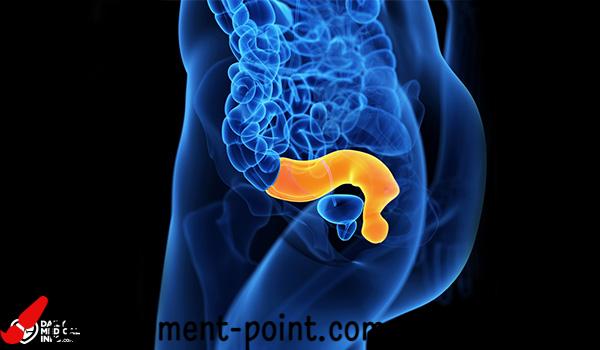Visceral fat: where is it located, its dangers, and ways to get rid of it
What is visceral fat? Where are you located? And what are the health risks that result from its presence? Learn with us from the following article about everything related to this type of fat, how it can be measured and its normal percentage, in addition to the most important ways to get rid of it and avoid its risks and other important information for you and your health, so be sure to follow up.
What is visceral fat?
Visceral fat is a type of body fat that is stored in the abdominal cavity area. Sometimes visceral fat is called active fat as it can increase the risk of some serious health problems.
Locations of visceral fat include:
- near the liver.
- stomach.
- Intestine.
- It can also collect in the arteries.
It should be noted that not all belly fat is visceral fat, as there is another type of belly fat known as subcutaneous fat, and as the name is, it is stored under the skin.
How to measure visceral fat
The only way to accurately identify and measure visceral fat is a CT scan or MRI scan, but these tests are usually expensive, so doctors resort to using some general guidelines to identify and evaluate this type of fat and determine its potential danger to the body and health.
According to the available research, 10% of the total body fat is considered visceral fat. If you calculate the percentage of total body fat, you can consider 10% of this percentage as visceral fat.
Another way to measure this fat is to measure your waist or measure your waist-to-hip ratio (WHR) at home. To measure this ratio at home, follow these steps:
- Stand up straight.
- Find and measure the smallest part of the waist, usually just above the navel. This is the waist circumference measurement.
- Find and measure the widest (widest) part of the hips and buttocks. This measurement is considered to be the hip circumference.
- Divide your waist circumference by your hip circumference, and the resulting number is your WHR.
According to a report issued by WHO, if the waist-to-hip ratio in women is higher than 85 and in men is higher than 90, this ratio indicates the presence of obesity and fat in the abdominal area.
Normal visceral fat percentage
- If a CT scan or an MRI scan is used, the fat is measured on a scale between 1 to 59, and the normal percentage of fat on this scale should be less than 13.
- In the case of a waist measurement, if a woman has a waist circumference of 35 inches (88.9 cm) or greater, and in men it is 40 (101.6 cm) or greater, then this means that they usually have visceral fat, so the waist measurement should be less than this percentage.
Complications of visceral fat and its harms
This type of fat can cause serious health problems, which appear quickly. The main health complications resulting from the accumulation of visceral fat include:
- Increased insulin resistance, even in the absence of diabetes or pre-diabetes.
- Rapid rise in blood pressure.
- Heart disease such as a heart attack.
- Type 2 diabetes.
- brain attack.
- breast cancer.
- Rectal cancer.
- Alzheimer’s disease.
How to get rid of visceral fat
Most of those who suffer from this type of fat usually ask how do I get rid of visceral fat, so here are the most important methods used to get rid of the risk of this fat:
Diet to lose visceral fat
The most prominent diets that can help get rid of this fat include:
- Low-carb diet: Numerous studies have shown that this diet is the most effective in reducing visceral fat, compared to other types of diets based on fat reduction.
- Keto diet: It is also considered a low-carb diet, which helps reduce the percentage of these fats in the body.
- Intermittent fasting: According to many experiments, this system can help reduce the percentage of these fats, but it must be applied with caution and the instructions should be followed carefully.
Exercises to get rid of visceral fat
Exercise is one of the best ways to get rid of this type of fat, and the best exercises that target this type of fat are cardio and strength exercises. Examples of these exercises include:
- running.
- bicycle.
- plumbing.
- Aerobic exercises.
- Squats.
- Weight lifting.
- Push-up exercises.
Treatment of visceral fat with herbs
There is no reliable information available about herbs that can be used to treat and eliminate this type of fat permanently, but there are some natural herbs that help in losing weight in general from the whole body, including the abdomen, including the following:
- The ring: It can reduce appetite, which leads to reduced food intake and weight loss.
- Chili pepper: It increases metabolism (metabolism) and reduces hunger and the number of calories entering the body.
- Ginger: It increases metabolism and fat burning, reducing fat absorption and also reducing appetite.
- oregano: reduces fat gain and weight.
- Ginseng: A Chinese remedy that stimulates weight loss and delays the absorption and accumulation of fat.
- Turmeric: A plant commonly used to reduce appetite and promote weight loss.
- Black pepper: Some studies have shown that it helps reduce body weight and fat accumulation.
- Green coffee extract: It can help reduce body weight and belly fat.
- latency: A popular herb, it can help reduce body weight and fat effectively.

